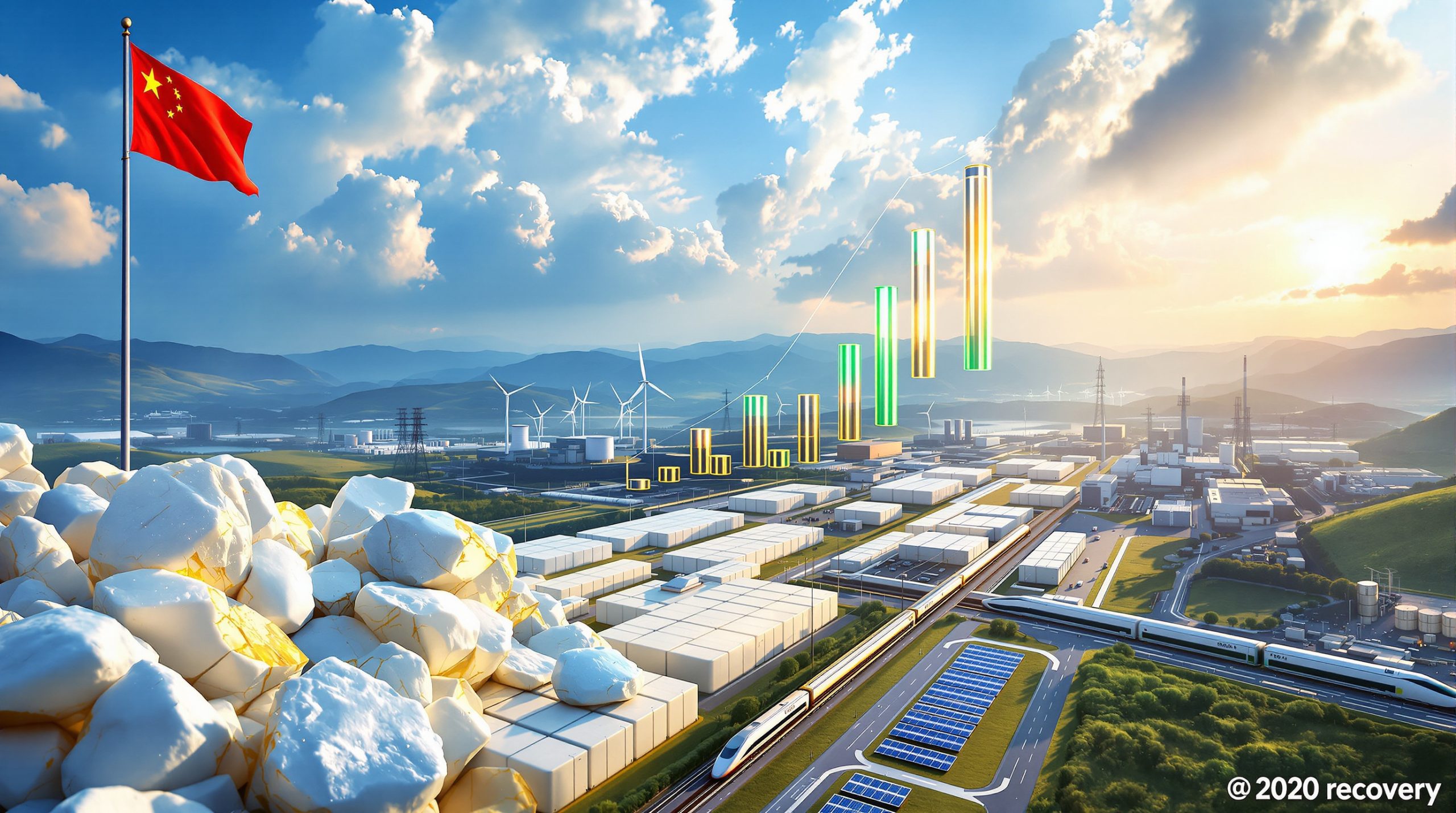What Caused Silicon Metal Prices to Rebound in June 2025?
The silicon metal market witnessed a significant price recovery in June 2025, marking a decisive turnaround after a prolonged downward trend. This reversal caught many market participants by surprise, as both futures and spot markets registered notable gains that defied earlier bearish forecasts.
Unexpected Price Reversal After Prolonged Decline
Silicon prices stopped falling and rebounded in late June 2025, breaking free from a persistent downtrend that had dominated market sentiment. The main silicon metal futures contract closed at 8,140 yuan/mt on July 9, representing a substantial 9% month-on-month increase of 665 yuan/mt. This upward momentum was mirrored in the spot market, where oxygen-blown #553 silicon at Tianjin Port reached 8,500-8,700 yuan/mt, climbing 7% (600 yuan/mt) from previous month levels.
"The price reversal came after months of downward pressure, surprising many traders who had positioned for continued weakness," noted industry analyst Zhang Wei from SMM Research. "This abrupt shift demonstrates how quickly fundamentals can change in the silicon metal market when supply-side disruptions coincide with demand improvements."
Supply-Side Constraints Driving Price Recovery
The primary catalyst behind this price rebound was unexpected production curtailments at major facilities across northern China. Several large-scale producers implemented unplanned production cuts, creating immediate supply tightness in key trading hubs. While some capacity resumed operations in Yunnan province during the July rainy season (taking advantage of lower hydropower costs), the overall effect still resulted in a net production decline.
This supply contraction created significant upward pressure on prices as market participants scrambled to secure material. The situation was exacerbated by continued uncertainty regarding restart timelines for several large Xinjiang plants, which normally contribute substantial volume to the market.
Market Insight: The geographical distribution of silicon production in China creates seasonal supply patterns, with hydropower-dependent regions like Yunnan typically increasing output during rainy seasons (May-October), while thermal power-dependent northern regions maintain more consistent production profiles.
Improving Demand Fundamentals
The second key factor supporting price recovery was strengthening demand from key downstream sectors:
- Polysilicon sector: Production reached 101,000 mt in June, representing a 5% month-on-month increase
- Polysilicon outlook: July production schedules increased to approximately 107,000 mt
- Silicone production: Output grew to 209,000 mt in June, a robust 13.8% month-on-month increase
- Silicone forecast: July production projected to reach 213,000 mt
These increases in downstream production schedules are estimated to boost silicon metal demand by approximately 10,000 mt in July alone, creating additional support for prices.
Industry experts point to policy-driven expectations of polysilicon price increases as providing further psychological support to silicon metal prices. This interconnection between silicon metal and downstream polysilicon markets highlights how sentiment in related industries can influence pricing dynamics through supply chain relationships.
How Do Current Production Levels Compare to Historical Patterns?
The silicon metal production landscape in 2025 shows significant structural changes compared to previous years, with output levels markedly different from historical norms across various regions.
H1 2025 Production Analysis
According to comprehensive market data, silicon metal production in June 2025 reached 327,700 mt, representing a 6.5% month-on-month increase but a substantial 27.7% year-on-year decline. This striking annual comparison underscores the magnitude of production adjustments that have occurred in response to market conditions.
The cumulative production for the first half of 2025 totaled 1.8728 million mt, down 17.8% compared to the same period in 2024. This decline represents one of the most significant year-on-year reductions in recent industry history, highlighting the extent of capacity rationalization that has taken place over the past year.
| Period | Production (mt) | MoM Change | YoY Change |
|---|---|---|---|
| June 2025 | 327,700 | +6.5% | -27.7% |
| H1 2025 | 1,872,800 | N/A | -17.8% |
Regional Production Shifts
The silicon metal production landscape is experiencing notable regional shifts that have reshaped traditional output patterns:
- Yunnan province: Facilities are increasing output due to favorable hydropower conditions during the rainy season, with production projected to rise by over 10,000 mt month-on-month in July
- Sichuan province: Production growth is expected to slow in coming months as capacity utilization rates plateau
- Northern regions: Production facilities have maintained relatively stable operating rates despite challenging market conditions
- Xinjiang uncertainty: Significant questions remain regarding the restart timeline for large Xinjiang plants that could substantially impact overall supply
These regional dynamics reflect both geographical advantages (hydropower access) and operational constraints that collectively determine production distribution across China's silicon metal industry evolution trends.
Supply-Demand Balance Assessment
The first quarter of 2025 saw inventory accumulation across the industry as production outpaced consumption. This trend reversed in the second quarter, with systematic destocking as demand improved and production curtailments took effect. The combined effect resulted in a relatively balanced supply-demand situation for the first half of the year.
Looking forward, July projections suggest continued destocking of approximately 20,000 mt, primarily due to delayed production resumptions in northern regions. This ongoing inventory reduction provides fundamental support for current price levels and could potentially drive further price appreciation if production disruptions persist.
What Factors Are Influencing Silicon Metal Pricing in Mid-2025?
The silicon metal market in mid-2025 is experiencing a complex interplay of bullish and bearish factors that collectively determine price direction. Understanding these competing influences is essential for anticipating potential market movements.
Bullish Market Influences
Several factors are creating upward pressure on silicon metal prices:
- Increased polysilicon production schedules: July schedules indicate approximately 107,000 mt, up from 101,000 mt in June
- Polysilicon price expectations: Market participants anticipate potential price increases in the polysilicon sector, providing sentiment support
- Rising electrode costs: Higher raw material prices are pushing electrode costs upward, affecting production economics
- Supply uncertainties: Delayed production resumptions in northern regions create ongoing supply concerns
- Improved fundamentals: Enhanced supply-demand balance following Q2 destocking has eliminated previous inventory overhang
"The combination of supply-side constraints and improving downstream demand has fundamentally altered market dynamics," explains industry consultant Li Mei. "After months of oversupply concerns, we're now seeing a more balanced situation that supports price stabilization."
Bearish Market Considerations
Despite the recent price recovery, several factors could limit further upside potential:
- Seasonal demand weakness: July-August represents the traditional off-season for silicone consumption
- Aluminum alloy slowdown: Aluminum-silicon alloy demand typically weakens during summer months
- Production uncertainty: The timing of northern production resumptions remains unclear, creating potential supply risks
- Reduced capacity utilization: Primary aluminum-silicon alloy enterprises operated at just 50.9% capacity in June
- Secondary aluminum constraints: Secondary aluminum alloy plants ran at only 53.3% capacity, indicating demand limitations
These bearish influences suggest that while prices have stabilized and recovered somewhat, significant further gains may be limited without additional catalysts.
Cost Structure Developments
The cost structure for silicon production is evolving in ways that impact producer margins and price sustainability:
- Silicon coal stability: Prices have stabilized after previous volatility, providing more predictable input costs
- Electrode price inflation: Costs have increased due to higher raw material inputs, particularly for needle coke
- Operating cost pressure: Producers continue to face margin challenges despite the recent price recovery
These cost dynamics influence production decisions, as facilities with higher cost structures may delay restarts until price levels provide sustainable margins. Additionally, commodity price impacts extend beyond the silicon market itself, affecting the broader mining sector.
How Are Different Market Segments Performing?
The silicon metal market serves various downstream sectors, each with distinct demand patterns and growth trajectories. Understanding segment-specific performance provides valuable insights into overall market dynamics.
Polysilicon Sector Analysis
The polysilicon sector is showing encouraging signs of recovery after previous challenges:
- June production increased 5% month-on-month to 101,000 mt
- July production schedules indicate continued growth to approximately 107,000 mt
- Resumed capacity in southwestern regions is supporting production increases
- Market expectations for polysilicon price increases are providing sentiment support for silicon metal
This recovery in the polysilicon sector is particularly significant given its position as a major silicon metal consumer. The growth trajectory suggests continued demand strength through the third quarter of 2025, potentially offsetting seasonal weakness in other segments.
Silicone Industry Performance
The silicone sector is demonstrating robust growth momentum:
- June production reached 209,000 mt, representing a 13.8% month-on-month increase
- July production is projected to reach 213,000 mt, continuing the upward trend
- Combined with polysilicon growth, these sectors are expected to increase silicon metal demand by approximately 10,000 mt in July
The silicone industry's performance is especially notable given that July-August typically represents the seasonal off-season for consumption. This counter-seasonal strength suggests underlying demand fundamentals may be more robust than historical patterns would indicate.
Aluminum Alloy Market Conditions
The aluminum alloy segment shows mixed performance with several concerning indicators:
- Primary aluminum-silicon alloy enterprises operated at 50.9% capacity in June (down from previous month)
- Secondary aluminum alloy plants ran at 53.3% (slight month-on-month increase)
- July's seasonal factors are expected to reduce downstream orders
- Operating rates at alloy enterprises are projected to decline slightly in the coming month
These relatively low operating rates suggest persistent demand challenges in the aluminum sector, potentially limiting silicon metal consumption from this important downstream segment.
What's the Outlook for Silicon Metal Prices in H2 2025?
The outlook for silicon metal prices in the second half of 2025 depends on the resolution of several key uncertainties and the relative strength of competing market factors.
Near-Term Price Projections
Market analysts suggest that while the positive price momentum has been largely realized, further significant price increases may be challenging without additional market catalysts. The key factors to monitor include:
- Timing of production resumptions in northern regions
- Actual versus projected downstream demand realization
- Inventory levels across the supply chain
- Cost structure developments, particularly for electrodes and silicon coal
"The initial price recovery represented a correction from oversold conditions rather than the start of a major bull market," notes commodities strategist Wang Jian. "For sustained price appreciation, we would need to see either further production disruptions or demand exceeding current projections."
Supply-Side Uncertainties
The uncertainty surrounding production resumptions following cuts in northern regions remains a critical variable. If resumptions are delayed beyond current expectations, the market could continue destocking at a pace of approximately 20,000 mt in July, providing further support for prices.
Conversely, earlier-than-anticipated restarts could quickly shift the supply-demand balance, potentially pressuring prices. Market participants should closely monitor announcements from major northern producers for signals regarding restart timelines.
Seasonal Demand Patterns
The traditional summer off-season for silicone and aluminum alloy consumption could limit price upside despite improved fundamentals. Trading volumes have already weakened following the initial price rally, suggesting price-sensitive buying behavior.
However, the counter-seasonal strength in polysilicon production could partially offset these typical patterns, providing some underlying support during the traditional summer lull. The Iron ore price forecast shows similar seasonal fluctuations that impact broader commodity markets.
Market Sentiment Factors
News-driven sentiment has played a significant role in the recent price recovery. Market participants should monitor policy developments, particularly those related to polysilicon pricing and renewable energy initiatives, which could influence silicon metal pricing through interconnected supply chains.
Expert Perspective: "Silicon metal markets increasingly reflect not just current supply-demand balances but also expectations about future policy directions, particularly regarding solar energy development and related polysilicon demand," explains energy transition analyst Dr. Chen Ling.
The energy transition impact on silicon metal pricing remains significant, as renewable energy deployment accelerates globally, creating additional demand for polysilicon and, by extension, silicon metal.
FAQ: Silicon Metal Market in 2025
What were the key drivers behind the silicon price rebound in June 2025?
The price recovery was primarily driven by a combination of unexpected production cuts in northern China creating supply constraints, improved demand from polysilicon and silicone sectors, stabilizing raw material costs, and positive market sentiment regarding future polysilicon prices. This perfect storm of bullish factors reversed the previous downward trend and established a new price floor.
How does current silicon production compare to previous years?
Silicon metal production in H1 2025 reached 1.8728 million mt, representing a significant 17.8% decline compared to the same period in 2024. This substantial reduction highlights the production adjustments that have occurred in response to market conditions over the past year. The June 2025 output of 327,700 mt was 27.7% lower than June 2024, underscoring the magnitude of capacity rationalization.
Which downstream sectors are showing the strongest demand for silicon metal?
The polysilicon and silicone sectors are demonstrating the strongest demand growth, with month-on-month production increases of 5% and 13.8% respectively in June. Combined, these sectors are expected to increase silicon metal demand by approximately 10,000 mt in July. In contrast, the aluminum alloy sector continues to show weakness, with operating rates below 55% for both primary and secondary producers.
What are the main risks to silicon prices in the second half of 2025?
The primary risks include potential oversupply if northern production facilities resume operations earlier than expected, weakened demand during the traditional summer off-season for key downstream sectors, and uncertainty regarding cost structures, particularly for electrodes and silicon coal. Additionally, any policy changes affecting the polysilicon sector could have knock-on effects for silicon metal demand and pricing. Global tariffs and investment markets also present potential risks to price stability.
How has the supply-demand balance evolved in 2025?
The first quarter saw inventory accumulation, followed by destocking in the second quarter, resulting in a relatively balanced H1 supply-demand situation. July projections suggest continued destocking of approximately 20,000 mt, primarily due to delayed production resumptions in northern regions. This transition from oversupply to balance has been a key factor supporting the price recovery, according to a recent report on polysilicon market conditions by industry analysts.
The global context for silicon prices is further illuminated by research showing silicon metal prices diverging across regions, with different market dynamics in China compared to the US and Europe.
Ready to Gain an Edge on ASX Mineral Discoveries?
Discover the next major mining opportunity before the market with Discovery Alert's proprietary Discovery IQ model, delivering instant notifications on significant ASX mineral discoveries directly to your inbox. Explore why historic discoveries can generate substantial returns by visiting our dedicated discoveries page and begin your 30-day free trial today.




